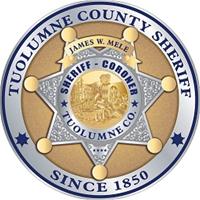Sonora, CA…The Tuolumne County Sheriff’s Office has received several reports of Microsoft fraudulent calls. It has been reported that the calls are coming from an 825 area code, notifying you that there is a problem with your computer. The caller asks if your computer is on and proceeds to give you directions on what buttons to press and phrases to type.
Microsoft has sent out a press release on these types of scams. In their release they stated the person at the other end tells you they are calling to inform you that your computer has been compromised or is infected with malware or a virus. They may ask you if you think your machine has been running slowly. They will claim to be from ‘Windows Helpdesk’ or ‘Microsoft tech support’ and will tell you that you must give them access to your PC so they can check and fix the problem for you, sometimes for a fee.
Microsoft reassures all users of their software that they will never make an unsolicited call to you to charge you for computer security or software fixes.
If you do get one of these calls and you know it’s a scam, just hang up the phone. Advise your friends and family that these kinds of calls are always scams. The more people who know, the less effective these calls will be.
Here are some informative and helpful tips to assist you if you find yourself in this situation.
If you receive a fraudulent phone call:
•Hang up
•Treat all unsolicited phone calls with skepticism and suspicion. Do not provide any personal information.
Cybercriminals often claim to be from any of the following or similar sounding names:
•Windows Helpdesk
•Windows Service Center
•Microsoft Tech Support
•Microsoft Support
•Windows Technical Department Support Group
•Microsoft Research and Development Team (Microsoft R & D Team)
What can the scammers do if they gain access to my PC?
If cybercriminals gain access to your computer, they may do the following:
•Trick you into installing malicious software that could capture sensitive data, such as online banking user names and passwords. They might also then charge you to remove this software.
•Take control of your computer remotely and adjust settings to leave your computer vulnerable.
•Request credit card information so they can bill you for phony services.
•Direct you to fraudulent websites and ask you to enter credit card and other personal or financial information there.
What do I do if I have already given access to my computer?
If you think that you might have downloaded malware from a phone tech support scam website or allowed a cybercriminal to access your computer, take these steps:
•Change your computer’s password, change the password on your main email account, and change the password for any financial accounts, especially your bank and credit card.
•Scan your computer with the Microsoft Safety Scanner to find out if you have malware installed on your computer.
•Install Microsoft Security Essentials. (Microsoft Security Essentials is a free program. If someone calls you to install this product and then charge you for it, this is also a scam.)
•Call your bank to check that everything is in order.



